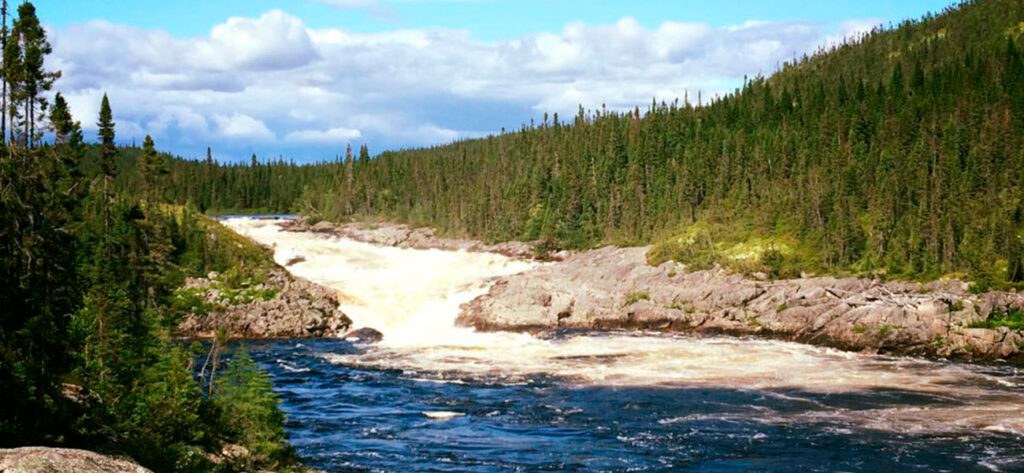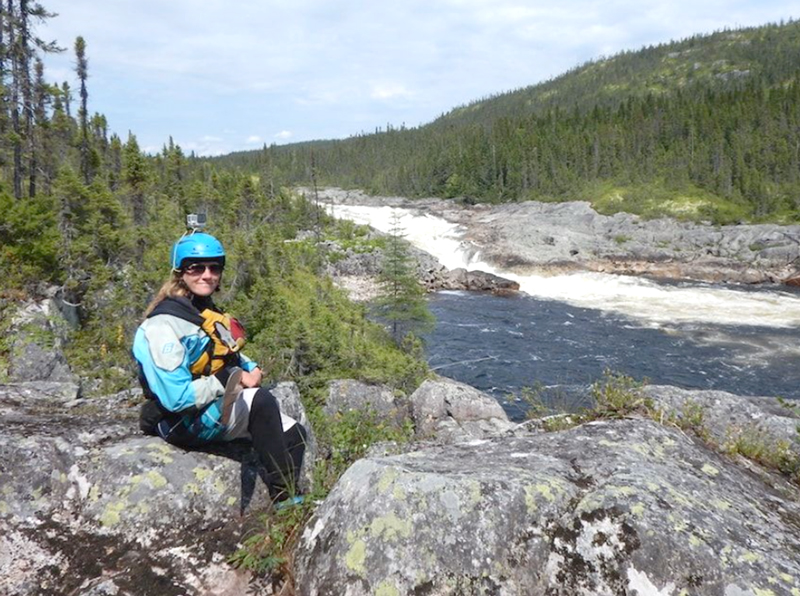Magpie River
On February 23rd 2021, the Alliance for the Protection of the Magpie/Muteshekau Shipu River (in Innu) in partnership with the International Observatory for Nature’s Rights, announced the recognition of the legal personality and rights to this majestic river.
The Magpie River is located in Nitassinan (the ancestral territory of the Innu people), in Eastern Quebec. Its Innu name, Muteshekau Shipu, means “the river where the water passes between square rocky cliffs”.
Approximately 290 km long, the Magpie River is one of the most important rivers of the North Shore and one of the last great wild rivers of Quebec[2]. It originates at the Quebec/Labrador border and flows into the Gulf of the St. Lawrence. Internationally renowned as a jewel of Nature, National Geographic magazine has ranked it among the top ten rivers in the world for whitewater activities.

Since time immemorial and long before the arrival of Europeans, the Ekuanitshit Innu First Nation has occupied, managed, used and frequented the Magpie River, practicing a unique way of life and subsisting on its resources. The Magpie River is an integral part of their distinctive culture and identity to this day. The Innu of Ekuanitshit continue to use the Magpie River and its resources for food and cultural purposes.
Despite the ecological and cultural importance of this majestic river, it does not receive adequate environmental protection. As a result, the Magpie River remains susceptible to commercial development. Such exploitation of the Magpie River would result in adverse environmental effects and would limit the exercise of the ancestral rights of the Innu community of Ekuanitshit.

The OIDN is working in partnership with the Ekuanitshit Innu Council, the Regional County Municipality (RCM) of Minganie and SNAP Quebec to conduct a study on the use of legal tools for the protection of the Magpie River, to ensure the implementation of the attribution of legal personality and rights to the river.
The team of the International Observatory for Nature’s Rights, which contributed to the drafting of the two mirror resolutions, is grateful for the valuable contribution of the Observatory’s associate researchers, experts in Nature’s rights and indigenous law, as well as the collaboration of the law students and interns associated with this project. This is a collaborative effort, not only to evolve the law, but also to improve our relationship with Nature.

The text of the resolutions are available via the following links: for the Ekuanitshit Council:
http://files.harmonywithnatureun.org/uploads/upload1072.pdf and for the MRC of Minganie: http://files.harmonywithnatureun.org/uploads/upload1069.pdf
The OIDN is proud to have participated in the paradigm shift from considering Nature as a mere “object” that can be exploited, to a “subject of rights” that must be respected and protected for future generations, human and non-human.
For more information please visit the blog:
La reconnaissance de la rivière Magpie/ Muteshekau Shipu comme personne-non humaine
